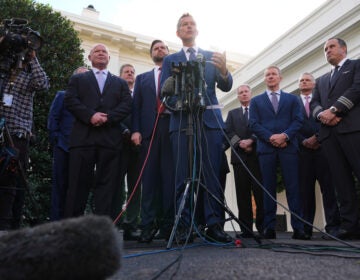Does immigration contribute to stagnant wages, unemployment and underemployment? The latest jobs report.
As always, when the Bureau of Labor Statistics jobs report for April was released on Friday, the White House and hopeful pundits reported it with optimism. Jobs increased by 288,000. The unemployment rate fell from 6.7% in March to 6.3%. Is the recession ending?
Careful readers of the jobs report had reservations. The New York Times reported that, “wages did not grow at all in April”, and quoted one economist saying, “we still have not reached the point where workers have negotiating power.” The Times noted that the lower unemployment rate, “provided little cause for celebration, since it was primarily because of a large decline in the number of people participating in the labor force rather than an increase in the number of Americans telling government survey workers that they had found a new job.”
Indeed, the civilian labor force consisting of those working or seeking work fell by more than 800,000 in April, resulting in a labor participation rate of only 62.8%, down from 63.2% in March. Unemployed Americans number 9.8 million, including 3.5 million unemployed for more than a year.
Involuntary part-time workers, counted among the employed, number 7.5 million. Discouraged workers no longer looking for work after concluding there are no jobs for them number nearly 800,000. They are not counted as unemployed. The unemployment rate for African-Americans is 11.6%. For teenagers seeking work the unemployment rate is 19.1%. And for African-American teenagers seeking work, the unemployment rate is 36.8%.
Even as American workers complain about stagnant wages and reduced hours and historically high levels of unemployment and underemployment, the push for increasing both legal and illegal immigration to the U.S. is gaining momentum, with the support of big business and the U.S. Chamber of Commerce.
Philadelphia and other local governments have announced they will no longer honor detainer requests from the federal agency responsible for removing criminal and other illegal aliens from the United States. Virginia, Florida, and other states announce that illegal alien children educated in public schools at the expense of U.S. taxpayers will now also qualify for reduced in-state college tuition. And the push for an end to deportations and an amnesty for all illegal aliens in the U.S., and a big increase in future legal immigration, continues unabated.
How do these state and local initiatives affect the cost-benefit analysis of foreigners contemplating illegal immigration to the U.S.? How does the large illegal alien population already in the U.S. affect the inability of American workers to increase their pay or to get more hours of work? How would the amnesty and increased immigration resulting from so-called “comprehensive immigration reform” affect struggling American workers if passed by the U.S. Congress?
The way to increase illegal immigration to the U.S. is to lower the costs through less enforcement, and to increase the benefits, like being able to get reduced tuition at public universities. Amnesty and increased immigration will expand the legal labor pool in which American workers must compete.
Are we concerned about the plight of our unemployed, underemployed, and underpaid fellow citizens or not? Where are the elected officials who see the connection between increasing immigration and low wages and high unemployment and underemployment?
Already young Americans, high school and college graduates, are resigning themselves to poorer lives than those of their parents. Already Americans are resigning themselves to increasing inequality, with wealth concentrating itself in the hands of the richest 1% of the population, who support increased immigration, with low wages and rising competition for work for everyone else.
If our sympathy for illegal aliens outweighs our concern for our fellow citizens, including our own children, we might as well stop spending $18 billion taxpayer dollars trying to enforce our generous legal limits on immigration, declare the borders open, and prepare to welcome the world’s population to the United States, to our public schools, to our system of public assistance and health care, and to our labor market.
WHYY is your source for fact-based, in-depth journalism and information. As a nonprofit organization, we rely on financial support from readers like you. Please give today.




